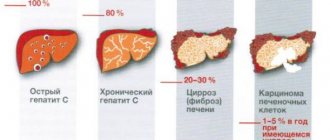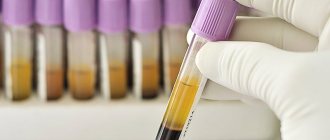Complexes with this research
Male anti-aging diagnostics Monitoring of basic indicators in men aged 40+ RUR 13,300 Composition
Anti-aging diagnostics in postmenopause Monitoring of age-related changes during postmenopause RUR 12,630 Composition
Vegetarians and vegans Metabolic control while avoiding animal products RUB 5,820 Composition
IN OTHER COMPLEXES
- Advanced anti-aging diagnostics in postmenopause RUB 29,230
- Biochemistry of blood. 13 indicators 3,490 RUR
- Women's anti-aging diagnostics RUB 12,070
- Preventive check-up RUB 11,960
- Biochemistry of blood. 19 indicators 6,280 R
Low albumin levels may predict poor outcome in patients with COVID-19
The COVID-19 pandemic has claimed more than four hundred thousand lives worldwide, and Spain is one of the worst affected countries. At the time of writing this article, there have already been more than 25,000 deaths due to COVID-19 in Spain. The article's authors explain that despite this, little information is available regarding the underlying characteristics and risk factors for patients at risk of hospitalization due to infection. This study included 48 patients admitted with COVID-19.
The scientists explained that it was necessary to identify factors on the basis of which an unfavorable prognosis for a particular patient can be made. The team said many studies show that there is suppression of the immune system during infection. This may be a key factor that leads to the progression of a mild infection to a more severe and ultimately life-threatening condition in the patient. Because inflammation plays a key role, factors that influence inflammation may be important in the progression of the disease.
Albumin is a protein produced in the liver and found in the blood. People with low albumin levels may have liver and kidney problems. Low albumin levels are also seen in patients with malnutrition, severe infection, thyroid disease, and inflammatory bowel disease.
The study involved 52 patients hospitalized due to complications of COVID-19 until March 31, 2020. Of these patients, 48 had severe acute respiratory syndrome due to SARS-CoV-2. They all tested positive for the virus. Data were collected between 15 and 31 March 2021. The aim of the study was to describe the clinical characteristics and epidemiological features of severely and critically ill patients.
Among the 48 patients, 21 were admitted to intensive care and 27 were not. All of these patients were residents of the island of Mallorca in Spain. Their average age was 66 years, and 67% were men. The age distribution was similar among patients. The following conclusions were made:
before hospitalization included fever (all patients), cough (85% of patients), difficulty breathing (76% of patients), diarrhea (42% of patients, and weakness (21%)).
The main reason for hospitalization among patients was low blood oxygen levels (SpO2 below 90%) and the presence of pneumonia in both lungs (94% of cases).
Among all patients, 70% had high blood pressure, 62% had high cholesterol and 30% had heart disease.
Those admitted to the intensive care unit (ICU) had more difficulty breathing.
Acute respiratory syndrome (ARDS) developed in all patients admitted to the ICU.
All 48 participants required oxygen therapy.
Laboratory tests showed that intensive care unit patients had low lymphocyte counts and low blood albumin levels.
Among patients admitted to the ICU, there was a significant increase in inflammatory markers such as lactate dehydrogenase (LDH), C-reactive protein (CRP), and procalcitonin compared with those not admitted to the ICU.
Lower blood albumin levels were significantly associated with worse outcome and longer hospital stay. The risk of death was also higher among people with lower blood albumin levels.
In red blood cell studies, mean corpuscular volume of red blood cells was lower among patients who died from infection and its complications.
At the end of the study (April 28, 2021), the mortality rate was 21%: 8 patients in intensive care units and 2 in other units died from infection.
At the end of the study, all non-ICU patients were discharged from the hospital. While among the intensive care unit patients, one third remained in hospital at the end of the study (5 in the intensive care unit and 2 transferred to general wards).
Conclusions and implications
People with influenza A (H1N1) and human immunodeficiency virus infection (HIV) also had a poorer outcome if they had lower albumin levels, the paper's authors reported. Among patients with influenza, the need for respiratory support increased with low albumin levels, and among patients with HIV, low albumin levels meant a greater risk of inflammation and atherosclerosis.
This was a relatively small study that showed that certain laboratory parameters may be important in characterizing the severity of illness in patients with COVID-19. “Lower albumin levels were associated with worse outcomes in patients with COVID-19. Albumin may be important because of its association with disease severity and mortality in patients infected with SARS-CoV-2."
The scientists added: “This small case series provides the first steps towards a comprehensive clinical characterization of severe and critical adult patients with COVID-19 in Spain.”
Expert opinion
: Of course, based on such a small study, no final conclusions can be drawn. But now any additional information can adjust the forecasts for patients with COVID-19. Moreover, determination of albumin level is included in the list of standard laboratory tests.
Detailed description of the study
Albumin is a blood plasma protein that, by mass, occupies more than half of all plasma proteins. It performs a number of important physiological functions:
- Maintaining physical and chemical blood parameters: viscosity, pH, oncotic pressure;
- Regulation of circulating blood volume and its balance with intercellular fluid;
- Transport of certain hormones, drugs, fats and their complexes;
- Calcium binding and participation in its metabolism;
- Protein reserve: if there is not enough protein in food, albumin can become its source.
Albumin is synthesized in the liver under the influence of thyroid hormones and growth factors, and is excreted by the kidneys. If too little of it is produced in the liver or if it is excessively excreted in the urine, its plasma concentration decreases. This condition is called hypoalbuminemia.
The causes of low albumin levels can be acute and chronic liver diseases, which affects its synthetic function, kidney pathologies, and insufficient protein intake from food. Hypoalbuminemia can be a manifestation of hormonal diseases, intestinal pathologies and cancer. Regardless of the cause, a decrease in plasma albumin levels manifests itself externally as edema.
Physiologically, this is reflected in the properties of blood and transport functions. For example, the content of free molecules of drugs taken in the blood will increase. This may increase their side effects.
Increases in plasma albumin levels are rare: with dehydration or recent intravenous protein administration.
Albumin and its biochemical norm (ALB)
Total protein is represented by several fractions, the main one being albumin. The role of the latter is associated with maintaining a constant volume of fluid in the blood and transporting various chemical compounds. Since the synthesis of this protein occurs in the liver, its concentration in the blood can be used to judge the functioning of hepatocytes and the presence of liver pathology.
The starting material for the formation of protein molecules is amino acids. Some of them are synthesized endogenously, and the other part comes from food. In this regard, the determination of ALB is necessary for a full study of protein metabolism and the plastic (regenerative) capabilities of the body. The last factor is of particular importance in studying the dynamics of patient management after major operations, injuries, burns; it allows one to predict the healing process and, if necessary, adjust it in case of hypoalbuminemia.
In a healthy adult, the norm is 35-50 g/l. A decrease in concentration is observed when the synthetic function of the liver is impaired due to:
- Toxic or viral hepatitis;
- Fatty hepatosis;
- Alcoholic or biliary cirrhosis;
- Growth of primary tumors (hepatocellular or cholangiocellular cancer);
- Metastatic lesion.
The deficiency may also be caused by:
- Low protein content in food;
- Prolonged fasting;
- High need for a recovery period after surgery and serious injuries;
- Increased utilization during cancer intoxication;
- Losses due to fluid accumulation in the chest (hydrothorax) and abdominal cavity (ascites);
- Kidney failure, which is accompanied by loss of protein in the urine.
For diagnostic and preventive purposes, it is necessary to study ALB in patients:
- After major invasive interventions;
- After prolonged therapeutic fasting (surgeries on the digestive organs, pancreatitis);
- A few days after the evacuation of pleural and abdominal height;
- If liver and kidney symptoms occur;
- In case of edema of unknown origin;
- With intensive treatment with corticosteroids;
- In athletes and people involved in heavy physical labor.
Timely detection of albumin deficiency allows one to avoid the development of severe consequences in the form of “hunger edema”, a decrease in the body’s regenerative function and the ability to eliminate toxins.
Basic information
Albumin is synthesized in liver cells (up to 15 g per day). For the body, it is the main reserve protein (a source of amino acids), i.e., during periods of prolonged fasting, it is consumed first.
Albumin maintains circulating blood volume. It determines oncotic (colloid-osmotic) pressure by 80%, since due to the small size of its molecules it is contained in fairly large quantities in the serum. Albumin ensures the transport of important chemical compounds: bilirubin, urobilin, cholesterol, calcium, bile salts, fatty acids, exogenous substances (penicillin, sulfonamides, hormones, mercury and some drugs).
In addition to the oncotic and transport functions, albumin has a wide range of other important physiological functions, such as immunocorrection, endothelial stabilization, and antioxidant effects.
Important! One “taxi molecule” of albumin is capable of binding and transporting up to 25-50 molecules of bilirubin, for example. Therefore, hypoalbuminemia increases the concentration of free (unbound) biologically active components. This fact must be taken into account when selecting the dosage of drugs, because against the background of low albumin concentrations, the activity of drugs, and, accordingly, their therapeutic effect, can change, even becoming toxic.
In young children, pregnant women (especially in the 3rd trimester) and lactating women, as well as smokers, the content of albumin in the blood serum is slightly lower than in other groups of patients.
Deviation from normal levels of albumin in the blood occurs under the influence of both internal and external factors. Therefore, to make an accurate diagnosis, additional studies are prescribed to help determine the onset of the pathological process and its cause, as well as take all necessary measures to eliminate the disease.











